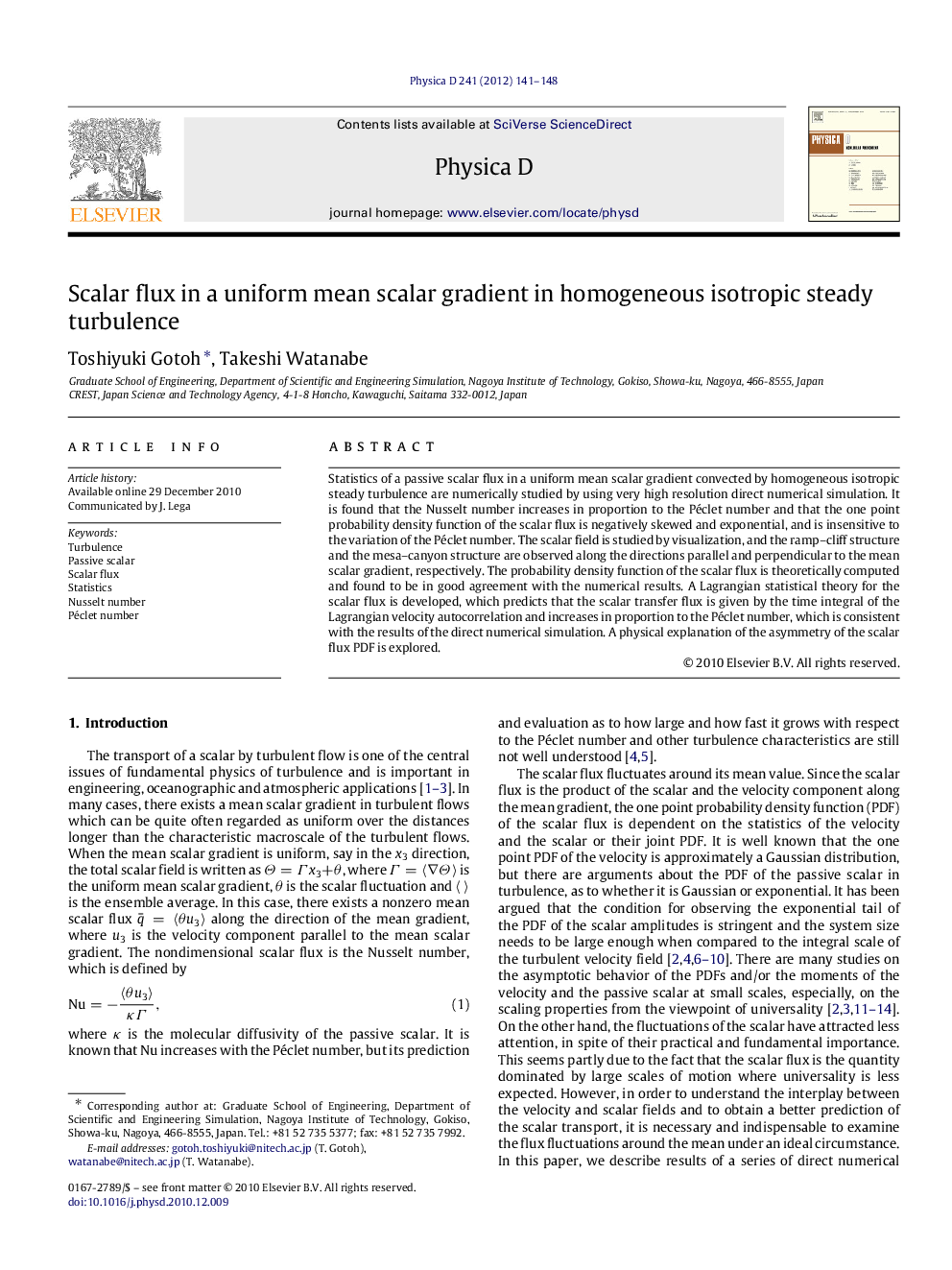| Article ID | Journal | Published Year | Pages | File Type |
|---|---|---|---|---|
| 1897631 | Physica D: Nonlinear Phenomena | 2012 | 8 Pages |
Statistics of a passive scalar flux in a uniform mean scalar gradient convected by homogeneous isotropic steady turbulence are numerically studied by using very high resolution direct numerical simulation. It is found that the Nusselt number increases in proportion to the Péclet number and that the one point probability density function of the scalar flux is negatively skewed and exponential, and is insensitive to the variation of the Péclet number. The scalar field is studied by visualization, and the ramp–cliff structure and the mesa–canyon structure are observed along the directions parallel and perpendicular to the mean scalar gradient, respectively. The probability density function of the scalar flux is theoretically computed and found to be in good agreement with the numerical results. A Lagrangian statistical theory for the scalar flux is developed, which predicts that the scalar transfer flux is given by the time integral of the Lagrangian velocity autocorrelation and increases in proportion to the Péclet number, which is consistent with the results of the direct numerical simulation. A physical explanation of the asymmetry of the scalar flux PDF is explored.
Research highlights► We found that the Nusselt number increases in proportion to the Péclet number. ► PDF tails of the scalar flux are skewed and exponential, and have different slopes. ► The Péclet number dependence of the Nusselt number is theoretically examined. ► A theoretical explanation of the skewed PDF is given from the Lagrangian viewpoint. ► The generating mechanism of the ramp structure of the scalar is also discussed.
